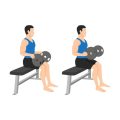1. Understanding Your Injury
Common Types of Sports Injuries
Before jumping back into your favorite sport, it’s important to understand the kind of injury you’re dealing with. Sports injuries can happen to anyone—whether you’re a weekend warrior, high school athlete, or playing at the college or pro level. Knowing what type of injury you have will help you set realistic recovery goals and avoid making things worse.
How Do These Injuries Happen?
Sports injuries often occur because of overuse, direct impact, or improper technique. Sometimes, it’s just bad luck—like twisting an ankle during a pickup basketball game or straining a muscle while sprinting to first base. Heres a quick look at some of the most common sports injuries and how they typically happen:
| Injury Type | How It Happens | Common Sports | Typical Healing Time |
|---|---|---|---|
| Ankle Sprain | Rolling or twisting the ankle awkwardly | Basketball, soccer, running | 2-6 weeks |
| Knee Ligament Tears (e.g., ACL) | Sudden stops, changes in direction, landing awkwardly | Soccer, football, basketball | 6 months – 1 year (with surgery) |
| Hamstring Strain | Sprinting or overstretching the leg | Track, football, baseball | 3-8 weeks |
| Shoulder Dislocation | Falling on outstretched arm or direct impact | Football, wrestling, volleyball | 4-12 weeks |
| Tennis Elbow | Repetitive wrist and arm motions | Tennis, golf, baseball | 2-6 months (may vary) |
| Concussion | Bump or blow to the head | Football, soccer, hockey | A few days to several weeks (must be fully symptom-free) |
The Importance of Proper Diagnosis and Setting Realistic Expectations
No matter how minor an injury might seem at first, getting a proper diagnosis is key. This usually means seeing a healthcare provider who specializes in sports medicine or orthopedics. They’ll help determine the severity of your injury through exams and possibly imaging tests like X-rays or MRIs.
A clear diagnosis allows for a customized rehab plan that fits your specific needs and goals. It’s also essential for setting realistic expectations for your return to play—rushing back too soon can lead to reinjury and even longer downtime. Remember: Everyone heals at their own pace, so comparing yourself to others isn’t helpful.
This understanding is your first step on the rehabilitation roadmap—it sets the foundation for safe and successful progress as you work toward getting back in the game.
2. Setting Milestones for Recovery
Returning to sports after an injury isn’t just about waiting for the pain to go away. It’s a team effort that involves you, your physical therapist, and sometimes your doctor or athletic trainer. Together, you’ll map out clear recovery goals so you can safely get back in the game—and stay there. Here’s how you can work with healthcare professionals to set meaningful milestones along your rehab journey.
Why Milestones Matter
Milestones help break down your recovery into small, manageable steps. Instead of focusing only on when you’ll play again, you’ll have short-term and long-term targets to keep you motivated and on track. Plus, these checkpoints make it easier for your care team to see what’s working and what needs adjusting.
Partnering with Healthcare Professionals
Your rehab plan should be a collaboration. At the start, talk openly with your healthcare provider about your sport, goals, and any worries you have. They will use evidence-based protocols—methods proven by research—to guide your treatment and ensure every step is safe and effective.
How to Set Smart Recovery Goals
| Type of Goal | Example | How to Measure |
|---|---|---|
| Short-Term | Regain full range of motion in injured joint within 4 weeks | Physical assessment by therapist; goniometer measurement |
| Short-Term | Walk without a limp for 10 minutes within 2 weeks | Observation during therapy sessions |
| Long-Term | Return to non-contact team practice in 12 weeks | Cleared by healthcare provider after progress evaluation |
| Long-Term | Compete at pre-injury level by start of next season | Performance testing; coach and medical sign-off |
Using Evidence-Based Protocols
Your recovery will follow steps that are supported by science. This might include specific exercises, rest periods, gradual increases in activity, and regular check-ins. Evidence-based protocols help lower the risk of re-injury and speed up safe healing.
Periodic Evaluations: Checking Your Progress
Your care team will schedule regular evaluations—maybe every couple of weeks or once a month—depending on your injury and sport. These check-ups might include strength tests, balance drills, or even video analysis of your movement. If you’re hitting your targets, great! If not, they’ll adjust your plan so you keep moving forward safely.
Your Role in the Process
You are an important member of your own recovery team! Stay honest about how you feel, follow your exercise plan closely, and don’t be afraid to ask questions. Remember: reaching each milestone brings you one step closer to playing the sport you love.

3. Physical Therapy and Conditioning
Physical therapy is a cornerstone of returning to sports after an injury in the United States. A licensed physical therapist (PT) plays a critical role by designing a rehab plan that fits each athletes unique needs, sport, and injury type. Instead of rushing back, PTs help ensure a safe and gradual return through targeted exercises and regular check-ins.
The Role of Physical Therapists
Physical therapists guide athletes through each step of recovery. They assess how well your body moves, identify weaknesses or imbalances, and create personalized exercise programs. They also educate athletes on proper form and techniques to avoid re-injury, acting as both coaches and healthcare providers during rehab.
Key Elements of Rehabilitation Programs
| Component | Purpose | Example Activities |
|---|---|---|
| Strength Training | Rebuild muscle strength lost during injury and prevent future injuries. | Resistance bands, weight lifting, bodyweight exercises |
| Flexibility Exercises | Improve range of motion and reduce stiffness. | Stretching routines, yoga poses, dynamic warm-ups |
| Cardiovascular Conditioning | Regain endurance needed for sport-specific demands. | Stationary biking, swimming, treadmill walking/jogging |
Sport-Specific Tailoring
No two sports are exactly alike—rehab for a soccer player looks different than for a baseball pitcher. Physical therapists modify exercises to match the skills needed in your sport. For instance, a basketball player might focus on jumping drills and agility work, while a swimmer may concentrate on shoulder mobility and core stability.
Gradual Progression is Key
Your PT monitors your progress with regular assessments and adjusts your program as you improve. This step-by-step approach helps prevent setbacks. Communication between the athlete, their family, coaches, and healthcare team is encouraged throughout the process.
4. Mental Resilience During Comeback
Returning to sports after an injury isn’t just a physical journey—it’s also a mental one. Athletes often face psychological hurdles like fear of re-injury, frustration with slow progress, or feelings of isolation from teammates. Building mental resilience is just as important as regaining physical strength.
Common Psychological Challenges
| Challenge | Description |
|---|---|
| Fear of Re-injury | Worrying about getting hurt again can hold you back from pushing yourself fully in training or games. |
| Loss of Confidence | Being sidelined can make you doubt your abilities and question if you’ll ever perform at your previous level. |
| Isolation | Missing practices and games can leave you feeling disconnected from your team and support network. |
| Frustration & Impatience | The recovery process may seem slow, which can lead to frustration or wanting to rush back too soon. |
Coping Strategies for a Stronger Comeback
- Goal-Setting: Break your rehab into small, achievable milestones. For example, aim to improve range of motion this week, then work toward jogging next week. Celebrate each win—no matter how small.
- Visualization: Take a few minutes daily to imagine yourself moving confidently and playing without pain. Visualization can help rebuild your confidence and prepare your mind for game-day situations.
- Lean on Your Support System: Stay connected with coaches, teammates, friends, and family. Share your progress and setbacks—they want to see you succeed and can offer motivation when you need it most.
- Talk It Out: Don’t be afraid to discuss your fears or anxieties with a sports psychologist or counselor. Mental health professionals are there to help athletes manage stress and stay focused on recovery.
- Stay Involved: If possible, attend team meetings or games even while injured. Staying engaged keeps you part of the group and reminds you why you’re working so hard to get back.
Mental Resilience Tips at a Glance
| Tip | How It Helps |
|---|---|
| Create Short-Term Goals | Makes big challenges feel manageable and builds momentum. |
| Practice Mindfulness or Meditation | Lowers anxiety and helps you stay present during rehab sessions. |
| Use Positive Self-Talk | Keeps motivation high and helps counter self-doubt. |
| Ask for Help When Needed | You’re not alone—reaching out shows strength, not weakness. |
5. Return-to-Play Guidelines and Injury Prevention
Key Criteria for a Safe Return to Sports
Before getting back into sports, it’s important to make sure your body is ready to handle the demands of your activity. Here are some key criteria that healthcare professionals in the U.S. often use to decide if you’re good to go:
| Criterion | Description |
|---|---|
| Pain-Free Movement | You should be able to move without pain during daily activities and basic sports movements. |
| Full Range of Motion | The injured area should have the same flexibility as your uninjured side. |
| Strength | Your strength should be at least 90% compared to your healthy side, based on specific muscle tests. |
| Endurance | You can complete drills or training sessions with minimal fatigue or compensation. |
| Functional Skills | You should be able to perform sport-specific skills (like jumping, cutting, or sprinting) with confidence and control. |
Common Functional Tests Used by Rehab Professionals
Physical therapists and athletic trainers use certain tests to check if you’re really ready to play again. Here are a few commonly used in American sports rehab:
- Single-Leg Hop Test: Measures leg power and stability—can you hop and land safely?
- Agility Drills: Involves shuttle runs or figure-8 runs to test speed and quick changes in direction.
- Bilateral Squat Test: Checks lower body strength, balance, and symmetry between sides.
- Ladder Drills: Assesses footwork, coordination, and reaction time, all crucial for most sports.
- Sport-Specific Movement Patterns: For example, throwing for baseball players or pivoting for basketball athletes.
Ongoing Strategies for Reducing Re-Injury Risk
Once you’re back in action, keeping up with smart habits is key to staying healthy on the field or court. Here are some ongoing strategies that athletes in the U.S. follow:
- Dynamic Warm-Ups: Always start with exercises like high knees, butt kicks, or arm circles before practice or games.
- Strength Training: Incorporate regular sessions focused on both major muscle groups and stabilizers around joints.
- Flexibility Work: Stretch regularly—especially after activity—to maintain range of motion and decrease stiffness.
- Balance and Proprioception Drills: Exercises like single-leg stands or balance board routines help prevent ankle sprains and other injuries.
- Load Management: Gradually increase intensity and volume—avoid “too much, too soon” which is a common cause of re-injury among American athletes.
- Rest and Recovery: Prioritize rest days and listen to your body; sleep plays a huge role in recovery too.
- Communication With Coaches and Trainers: Be honest about how you feel. If something doesn’t seem right, speak up early!
Athlete’s Checklist Before Returning to Play
| Status (Yes/No) | |
|---|---|
| No pain during movement? | |
| Sufficient strength and endurance? | |
| Able to perform sport-specific drills confidently? | |
| Cleared by medical professional? |


